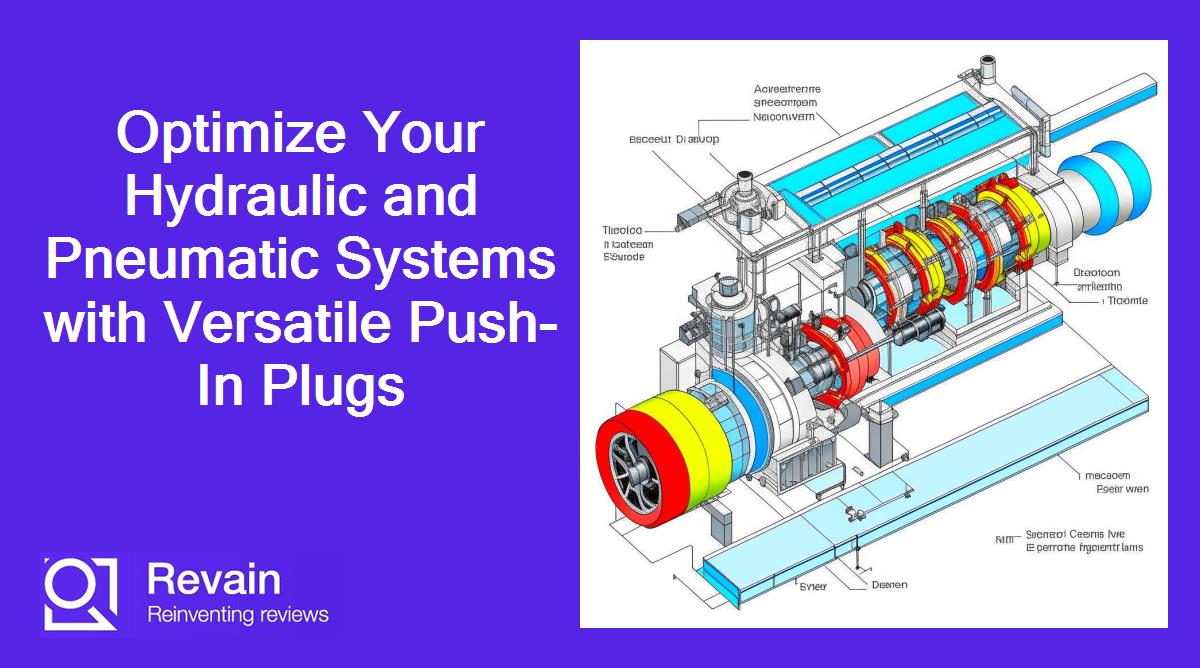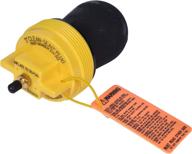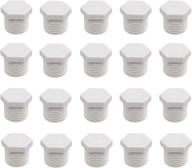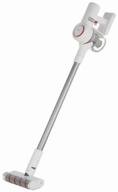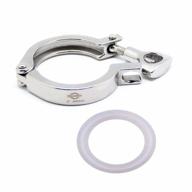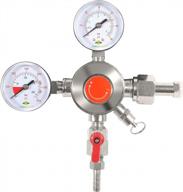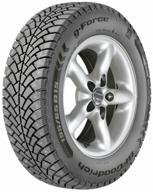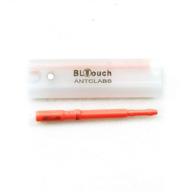Introduction to Push-In Plugs
Push-in plugs, also known as press fittings or quick connect fittings, are a popular type of fitting used for making hydraulic and pneumatic connections. They provide a fast and easy way to join tubes and pipes without requiring glues, sealants or tools.
How Do Push-In Plugs Work?
Push-in plugs work using an internal gripped mechanism. The plug contains a collet with stainless steel teeth that grip the outside of the tube when it is inserted into the fitting. This creates a strong, reliable seal.
- User pushes tube into plug until it hits a tube stop
- Collet teeth clamp down and grip tubing wall
- An o-ring provides additional sealing
The tubing remains locked in place until the release collar is actuated when disconnection is required. This allows many cycles of connect and disconnect.
Types of Push-In Plug Fittings
There are a few common types of push-in plug fittings:
- Straight plugs - for joining two tubes in a straight line
- Elbow plugs - 90° plugs for creating bends
- Tee plugs - for creating three-way intersections and branches
- Run plugs - straight through side outlet tees
These come in a huge range of sizes and thread types to suit different tube diameters. Most are made from nickel-plated brass for corrosion resistance.
Top products in 🔌 Push-In Plugs
Benefits of Using Push-In Plugs
Some key benefits of using push-in plugs include:
- Fast, tool-free installation
- Secure leak-free connections
- Vibration and pressure resistant
- Reusable - can be disconnected and reconnected multiple times
- Variety of plug design options
| Tube Type | Suitable Push-In Plug Materials |
|---|---|
| Stainless Steel | Brass, Steel |
| Copper | Brass, Acetal Plastic |
| Plastic Tubing | Acetal, Nylon, Polypropylene |
With so many design options, push-in plugs can accommodate almost any pneumatic or hydraulic application. Their ease of installation along with reliability make them an excellent choice over thread fittings or barbed connectors in many scenarios.
Common Applications and Uses of Push-In Plugs
Push-in plugs are extremely versatile and can be found in a wide range of hydraulic and pneumatic systems across many industries. Here are some of the most common applications and uses for these quick connect fittings.
Industrial Machinery
Push-in plugs are frequently used on industrial machinery where flexibility and fast line changes are required. Typical applications include:
- Actuation cylinders
- Valves
- Tools
- Automated equipment
Their ease of installation without power tools allows faster reconfiguration and maintenance.
Automotive
In automotive systems, push-in plugs may be used for:
- Brake lines
- Transmission oil cooling lines
- Power steering systems
- Air conditioning units
Again, the quick connect ability aids faster servicing and repair.
Pneumatic Tools
Push-in fittings are commonly used on pneumatic power tools of all types, including:
- Air ratchets
- Impact wrenches
- Air hammers
- Air drills
This allows easy connecting and disconnecting from air supply lines as needed.
Other Applications
Many other common uses for push-in plugs include:
- Irrigation systems
- Compressed air lines
- Low pressure water lines
- Dental equipment
- Laboratory analysing equipment
As you can see, push-in plugs are a versatile solution for quick and removable connections across many different industries and applications.
Benefits of Using Push-In Plugs
Push-in plugs provide several advantages over traditional threaded fittings or barbed connectors. Here are some of the top benefits of using these quick connect fittings.
Another interesting products
Fast and Easy Installation
Push-in plugs can be installed in seconds by simply inserting the tubing into the fitting. This saves significant time compared to thread fittings that must be screwed together, or barbed connectors that require hose clamps.
For example, installing a 1/2" push-in plug takes approximately 5 seconds. A 1/2" threaded connector may take 30-60 seconds to screw together by hand.
Similar products
Tool-Free Connections
No tools are required to connect push-in plugs. This enables faster plumbing changes and maintenance. Workers can attach tubing on the go without wrenches or other tools.
Trying to access and service threaded fittings in tight spaces often requires carrying and using wrenches. Push-in plugs avoid this issue.
Secure Leak-Free Seals
The gripped collet mechanism creates a reliable leak-free seal. Push-in plugs maintain tight sealing even against vibration or pressure surges.
Threaded fittings may loosen over time, requiring re-tightening to prevent leaks. Push-in plugs eliminate this concern.
Reusable Fittings
Push-in plugs are reusable and can be disconnected and reconnected multiple times. Threaded fittings become damaged after repeated re-assembly.
This reusable ability enables push-in plugs to be used for equipment that requires occasional line detachment for servicing or storage.
Range of Configurations
Push-in plugs come in straight, elbow and tee configurations to accommodate different connection needs. This flexibility reduces the need for multiple fitting types.
For example, a hydraulic system may only need push-in plugs instead of a combination of thread, barbed and quick connect fittings.
As you can see, push-in plugs provide fast, reusable and reliable tube connections in a wide range of fluid power and pneumatic systems.
Types of Push-In Plug Fittings
There are several common types and configurations of push-in plug fittings available. Each serves a different function for routing tubing and connecting hydraulic or pneumatic systems.
Straight Plugs
Straight push-in plugs are used to connect two tubes in a straight run. They provide flow through connectivity for extending tube runs.
- Available in wide range of sizes
- Most common push-in plug type
- Offered in thread and non-thread variations
Elbow Plugs
Elbow push-in plugs feature a 90 degree angle bend. This allows tubing to be routed around corners and obstacles.
- 90° angled fitting
- Available in threaded and non-threaded ports
- Variety of sizes from 1/8" to 1" tubing
Tee Plugs
Tee push-in plug fittings create a 3-way branch or intersection. This is useful for splitting flows to multiple devices.
- 3 port connectivity
- Even flow splitting performance
- Threaded and non-threaded variations
Reducing Plugs
Reducing push-in plugs allow transitioning between tubing of different diameters. This is important when connecting mismatching tube sizes.
- Available in reducing tee and elbow forms
- Allows connecting larger to smaller tubing
- Variety of size reductions
In summary, push-in plugs are offered in a wide range of configurations and sizes to accommodate diverse connection needs for hydraulic, pneumatic, and fluid transport systems.
What Are The Benefits Of Using Push-In Plugs?
Push-in plugs offer several benefits that make them a popular choice for various applications. Here are some of the benefits of using push-in plugs:
Overall, push-in plugs are a reliable, time-saving, and easy-to-use solution for various applications in the hydraulics, pneumatics, and plumbing industries.
What Are The Different Types Of Push-In Plugs Available?
There are several types of push-in plugs available in the market. Here are some of the types of push-in plugs:
- Snap-in round plugs: These are the most common type of push-in plugs. They are designed to snap into place and provide a secure fit. They are available in various sizes and materials.
- Plastic snap-in panel plugs: These plugs are designed to fit into panel holes and provide a finished look. They are available in various sizes and colors.
- Locking panel plugs: These plugs are designed to provide a secure fit and prevent accidental removal. They are commonly used in automotive and industrial applications.
- PIP series push-in plugs: These plugs are designed to fit SAE and NPT thread sizes. They provide the plugging quality of a threaded plug but are easy to push in.
- Push-in plug fittings: These are used to seal off unused ports in a pneumatic system. They create a leak-proof seal when inserted into a push-connect fittings port blocking off all flow. They are available in various sizes to fit almost any application and any standard push-connect fittings in the market.
- Elbow union push-in plugs: These plugs are designed to provide a secure fit in elbow union fittings. They are commonly used in pneumatic systems.
What Are The Differences Between Snap-In Round Plugs And Plastic Snap-In Panel Plugs?
There are several types of push-in plugs available in the market. Here are some of the types of push-in plugs:
- Snap-in round plugs: These are the most common type of push-in plugs. They are designed to snap into place and provide a secure fit. They are available in various sizes and materials.
- Plastic snap-in panel plugs: These plugs are designed to fit into panel holes and provide a finished look. They are available in various sizes and colors.
- Locking panel plugs: These plugs are designed to provide a secure fit and prevent accidental removal. They are commonly used in automotive and industrial applications.
- PIP series push-in plugs: These plugs are designed to fit SAE and NPT thread sizes. They provide the plugging quality of a threaded plug but are easy to push in.
- Push-in plug fittings: These are used to seal off unused ports in a pneumatic system. They create a leak-proof seal when inserted into a push-connect fittings port blocking off all flow. They are available in various sizes to fit almost any application and any standard push-connect fittings in the market.
- Elbow union push-in plugs: These plugs are designed to provide a secure fit in elbow union fittings. They are commonly used in pneumatic systems.
Overall, push-in plugs are available in various types and sizes to suit different applications in the hydraulics, pneumatics, and plumbing industries.






